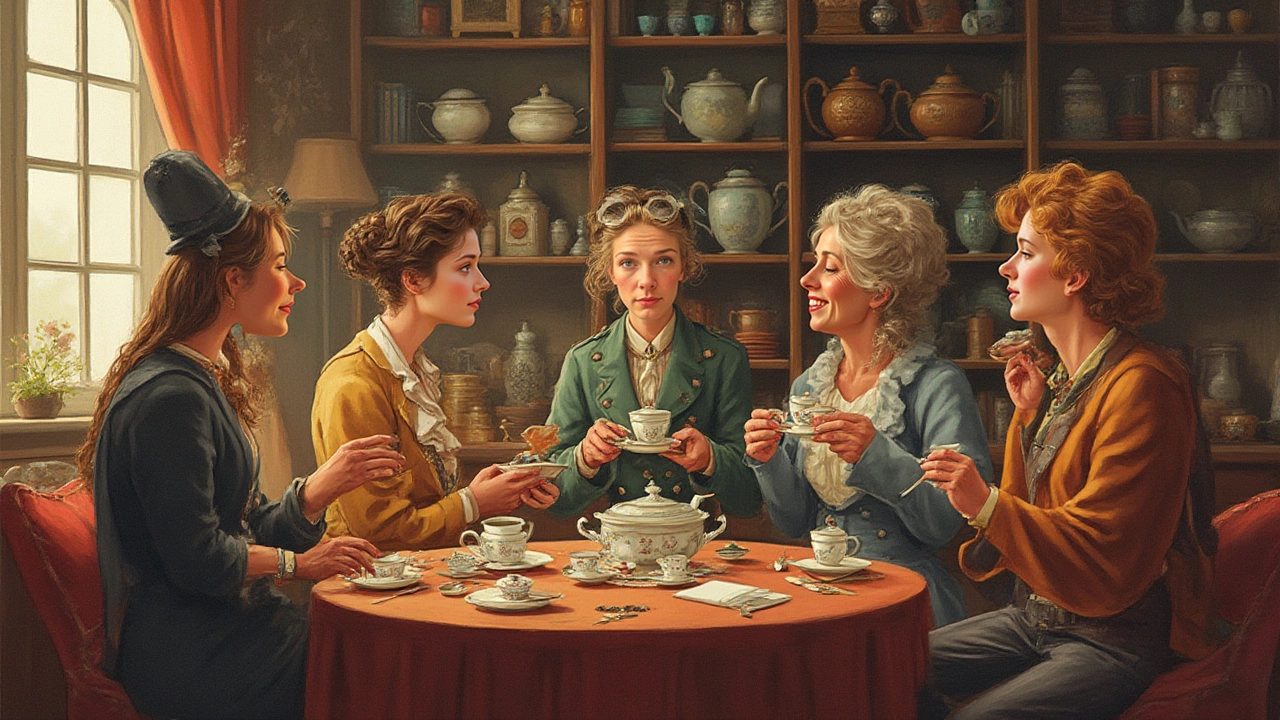Tea Addiction – How to Tell You’re Hooked and Keep It Healthy
If you find yourself reaching for a teacup at every break, you might be part of a fast‑growing group of teaphiles who can’t get enough of that warm, soothing sip. A tea addiction isn’t a bad thing—until it starts messing with your sleep, wallet, or even your stomach. Below you’ll get straight‑forward signs that your tea habit may have crossed the line and easy steps to enjoy your brew without the downsides.
Spotting a Tea Addiction
First, ask yourself how often you brew a cup. One or two a day is normal for most people; three or more every few hours often points to a habit that’s turning into a reliance. Notice if you feel jittery, shaky, or irritable when you skip a cup—those are classic withdrawal cues, just like coffee.
Another tell‑tale sign is the variety obsession. Loving oolong, black, green, and herbal is fine, but if you can’t stop buying new blends, checking reviews, and planning tastings, it might be feeding a compulsion. A quick audit of your tea stash can help: if you have more boxes than you can realistically drink in a month, you’ve probably stocked up out of habit, not need.
Don’t forget the impact on your health. Too much caffeine from black or pu‑erh tea can spike heart rate and keep you up at night. Even caffeine‑free herbal teas can cause stomach upset if you over‑brew or drink them on an empty stomach. If you notice any of these symptoms, it’s time to dial back.
Balancing Your Brew
The good news? You don’t have to quit tea altogether. Switch to lower‑caffeine options like white tea or herbal blends in the afternoon. These still give you the ritual of pouring, waiting, and sipping without the buzz.
Set a realistic limit. A simple rule is “one cup per hour, no more than six cups a day.” Use a timer on your phone if you need a reminder. This keeps your caffeine intake under control and lets you enjoy each cup mindfully.
If you love tasting events, plan them wisely. A tea tasting session is best paired with light snacks—think plain crackers, fresh fruit, or a small cheese board. Our post "What to Serve at a Tea Tasting: Food Pairings, Teas, and Tasting Setup Guide" explains why neutral foods let the tea flavors shine without overwhelming your palate.
Storage matters, too. Storing tea in a cool, dark place extends its shelf life and prevents the bitter taste that can make you over‑brew in search of flavor. Even if you have a 10‑year‑old tea collection, check the aroma; if it smells off, it’s safer to toss it. Our article "Is It Safe to Drink 10‑Year‑Old Tea?" breaks down the risks and benefits of aged tea.
Finally, make tea a social ritual, not just a solo pick‑me‑up. Invite friends for a tea‑time chat, share a favorite blend, or swap recipes for simple mocktails that use tea as a base. Turning the habit into a shared experience reduces the urge to constantly refill your own cup.
Remember, a love for tea can be a delightful part of daily life. By watching for warning signs and setting sensible limits, you can keep the addiction in check and continue to enjoy every comforting sip.
Curious about what a tea addict is called? This article digs into tea addiction terms, culture, quirks, and trivia for every tea lover.
View Details

